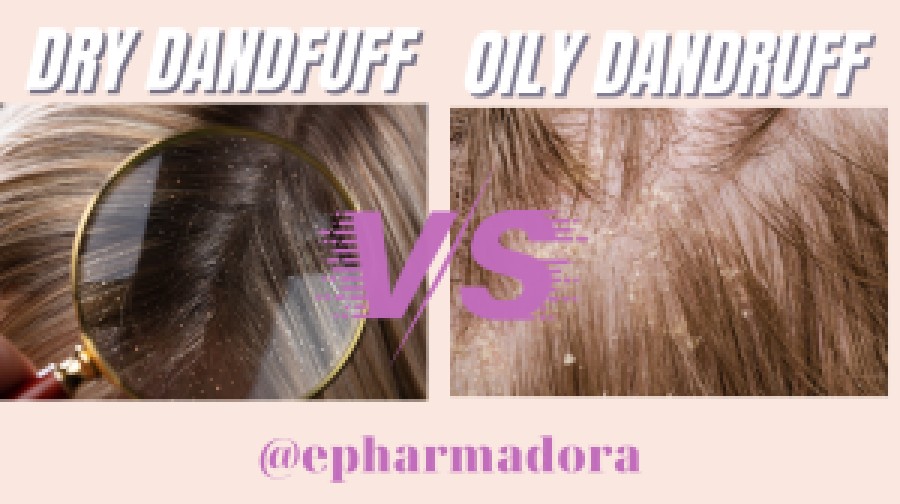Free shipping for orders over 39.00€
How to win the war against dandruff!

How often do you shake away the «snowy veil» that lands from your head on your shoulders? Do you avoid wearing dark clothes so that these hundreds of white flakes are not visible? If that’ s your case, you live in dandruff ‘s world!
Dandruff is a common, non-contagious skin disorder, yet anti-esthetic and therefore… hazardous for our self-confidence! Even more so, because dandruff is usually chronic and its cure is not easy, although -thanks to the plethora of special products that are available on the market- it can be brought under control and kept in remission.
Dandruff is consisted of numerous small scales, which are attached to the base of the hair and often cause irritation and itching to the patient. There are two types of dandruff, the dry and the oily dandruff.
In the dry dandruff, scales are small, thin and white and end up on the patient's shoulders.

In the oily dandruff, scales are larger, thicker, have a yellowish color and stick to the scalp and hair.
As much as one would expect that women, due to the constant use of hair care products (shampoos, masks, dyes, etc.) would be more vulnerable in the appearance of dandruff, men in fact, suffer more as they can have dandruff even on their beard! In general, however, young adults and middle-aged people with oily hair and a diet deficient in zinc, fatty acids and B vitamins are more likely to develop dandruff.
So, what causes dandruff? What factors activate it?
First of all, the tiny fungus Malassezia - that is found on the head of the majority of adults, and usually cause no problems - can be blamed for the appearance of dandruff. Because, when this fungus grows too much – as it being fed by the fatty substances secreted by the hair follicles - it irritates the skin and increases the skin cells. As a result, the body proceed to excessive exfoliation (white flakes) to treat the irritation. Various factors affecting the overgrowth of the fungus are stress, hormonal imbalance, poor diet, humidity, poor scalp care and harsh hair care products.
Dandruff can also occur in areas other than the head (e.g on the eyebrows, behind the ears, nose, chest, groin, armpits) as a result of a seborrheic dermatitis, that affects body areas "rich" in sebaceous glands, creating oily, red skin, covered with yellowish or white scales.
Weather conditions prevailing in winter or summer can cause dry skin, which in turn leads to the appearance of dandruff. The sudden change of temperature in winter (the transition from highly icy outdoor areas to extremely hot indoor or vice versa), but also the long exposure to the sun in summer, can cause dry skin that will transform into small scales on our head.
Also, people who suffer from psoriasis or some eczema (usually manifested in other parts of the body) are more likely to have symptoms on the scalp, causing dandruff. Finally, dermatitis caused by an allergic reaction to hair care or coloring products is manifested by irritation, itching and dandruff on the scalp.
Fortunately, dandruff, with systematic effort, can be treated if we reduce the oiliness and the accumulation of skin cells on the scalp, by using special shampoos and following some general guidance for our treatment.
We wash our hair daily or every other day with a special dandruff shampoo. We need to be consistent because, in that way, we ensure other beneficial results, such as hydration, oil control and immediate relief.
We change our shampoos regularly to maintain their effectiveness.
We apply the product and massage the scalp for at least five minutes, so that the medicine contained in the shampoo effect. We make sure that bathing is done with gentle and circular movements that remove dead cells. We do not rub or scratch the head, because this way we irritate the skin. We rinse the hair thoroughly from the remnants of the shampoo or conditioner so as not to burden our skin.
We avoid styling and hair care products, especially the hard ones that thin the hair. Instead, we brush our hair as often as we can. By brushing, the oils that accumulate on the scalp and create dandruff are transferred to the hair, working beneficially for them.
We avoid stress and try to manage anything that stresses us. We change our diet, try to be constantly hydrated and adopt a healthier nutrition, adding healthy fats such as salmon, avocado and walnuts.
We ask for the contribution of our dermatologist when simple shampoos do not produce the desired results and the use of special anti-dandruff medicines is needed. The dermatologist will decide which drug is right for us.
Click here for Anti- Dandruff Products.






